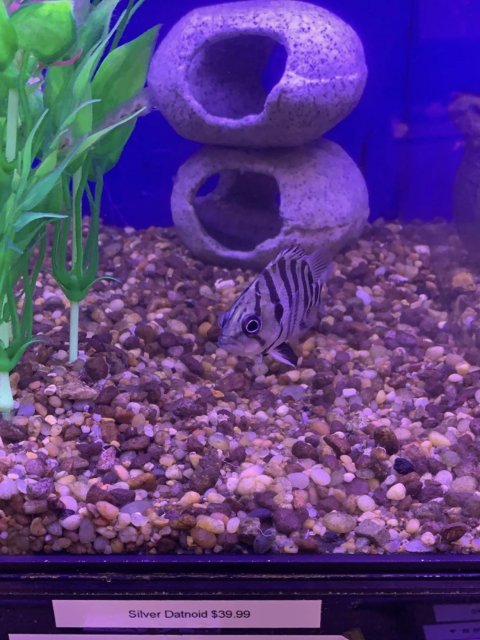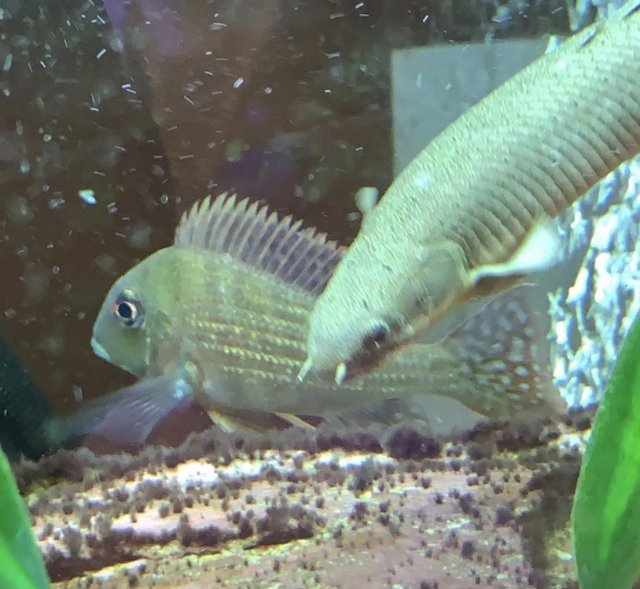True surinamensis are not widely available in the hobby. A few decades ago, all surinamensoid-type Geophagus were lumped under that name for sale. Today importers and wholesalers are still using it for as many as five different species. The smaller ones in your photos look like G. abalios. The other common species marked as surinamensis is altifrons. Both abalios and altifrons are common exports out of Colombia and sometimes you find them mixed at the pet store.
Regardless of abalios or altifrons, these are a large growing Geophagus that can reach 10 - 12” and can be pushy. They are often best kept in small groups as juveniles, or as singles. If you only get two, one will likely establish itself as the dominant fish and constantly bully the other.
Geos are eartheaters, sifting through substrate to find food. For this reason they do best with sand. Gravel may be sharp and hurt their gills.
All geos appreciate clean water and can be prone to HITH if the nitrates and dissolved organics get too high. The young ones in the picture you posted do not look to be in good condition. They are very thin.
Personally I would not put this species in a 75. If you are interested in geos go for something smaller like G. sp. Tapajos redheads/orangeheads. They are smaller, more colorful, and a small group of 4 or 5 could probably live in a 75 for life with adequate husbandry.












